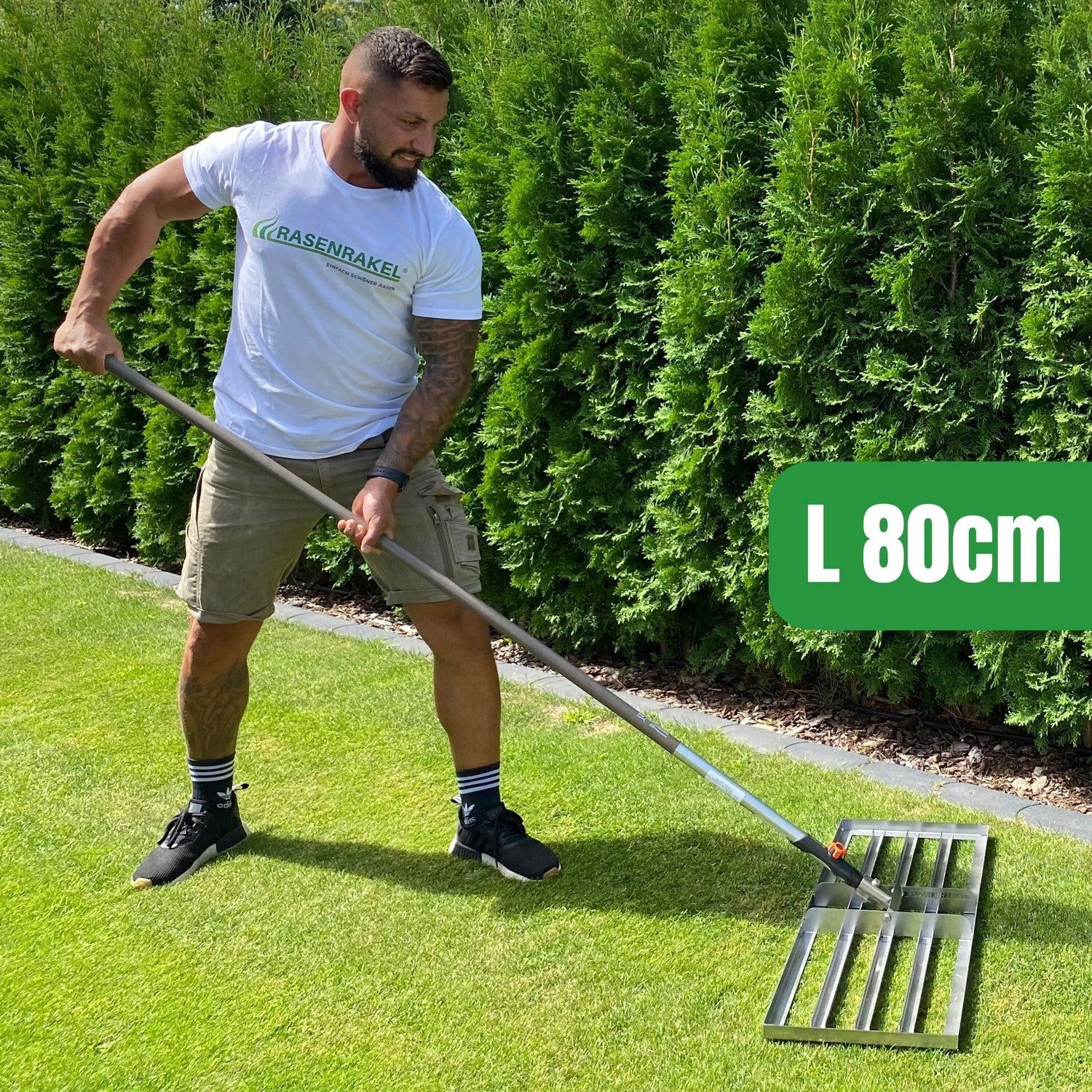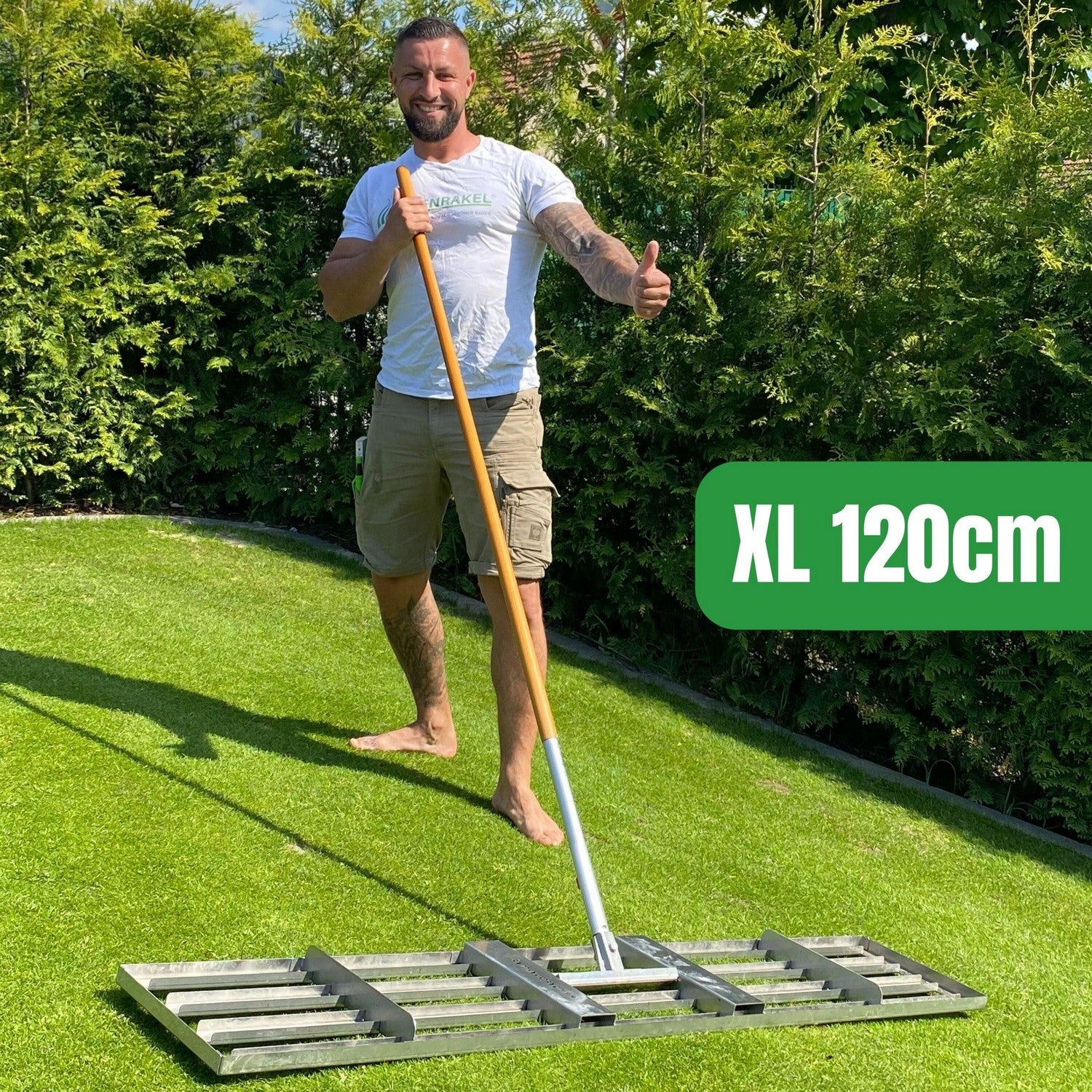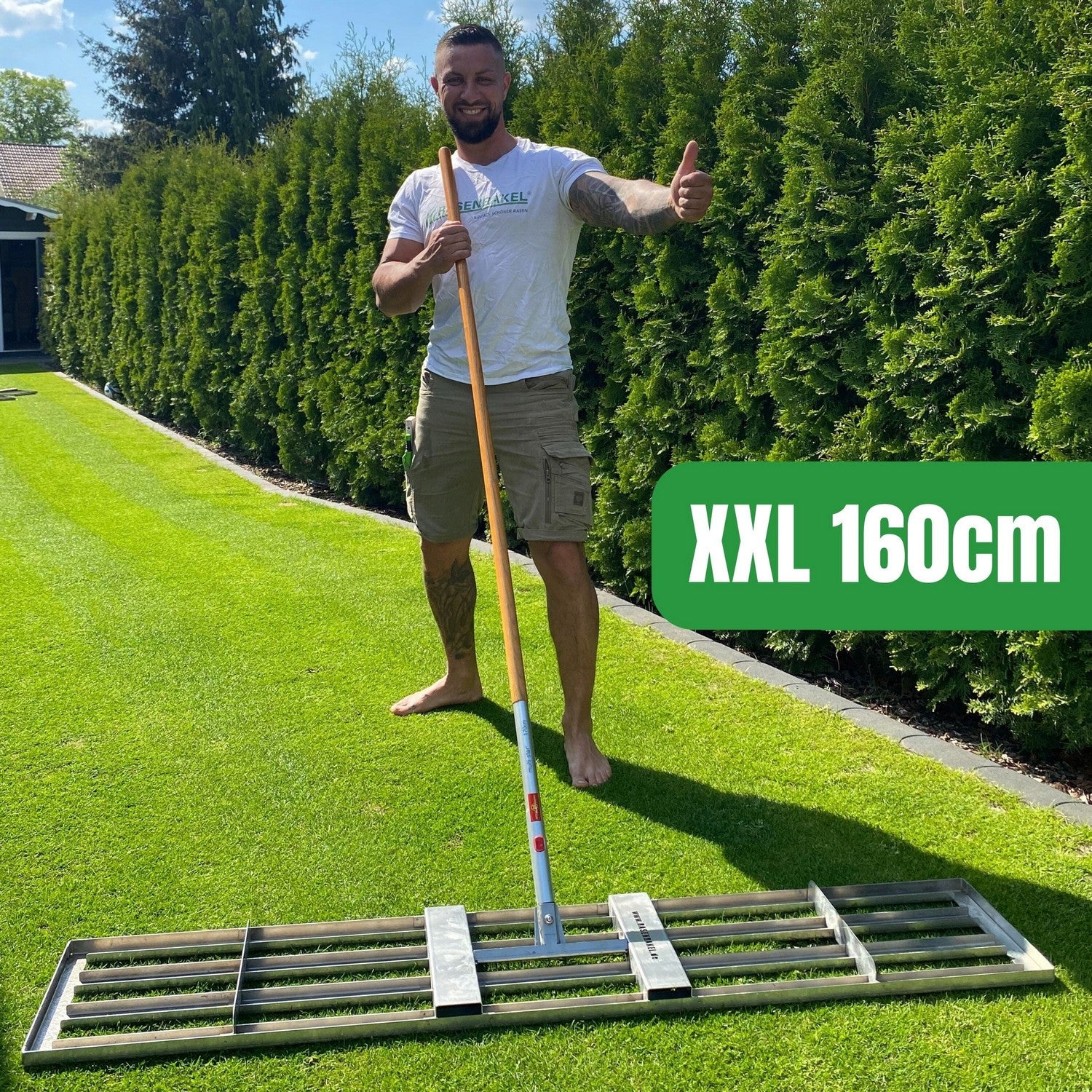Levelrake
Here you will find an overview of the different models of our original RISISANI® Rasenrakel.
Why, when and how to sand the lawn?
A lush green, healthy and even lawn is every garden lover's dream. To make this dream a reality, regular maintenance is essential. Sanding the lawn is a particularly important measure. But why is it so important, when is the best time and what is the best way to do it? Here's everything you need to know about lawn sanding in a nutshell.
Why sand?
The problem: the more your lawn is used, the more the soil is compacted. This happens automatically over the years, but also when building a new house using heavy machinery. Unevenness, waterlogging, moss formation and weak lawn growth due to too firm soil and too little oxygen to the roots are the result.
The solution: sand the lawn. What has contributed to dense and lush green on soccer pitches and golf courses for many years has also long been a must for professionals in the home garden: sanding the lawn. Sand not only evens out uneven areas, it also loosens the soil, providing natural drainage and more oxygen.
The result is not only a very even, but also a strong, healthy and lush green lawn, just like on the golf course!
When to sand?
Sanding the lawn with Rasenrakel is an effective method of improving the soil and promoting lawn growth. But of course, the right time for sanding is also crucial to achieve optimum results. The ideal time to sand the lawn is clearly during its main growth months: April, May, June, July, August and September, but spring and fall can also be used very well for a smaller amount of lawn sand to improve the soil.
How to sand?
To get the best results from sanding the lawn and really help the soil, you shouldn't just sprinkle the sand on the lawn. That won't help, of course.
Ideally, you should proceed in the following steps:
1. mow the lawn briefly, 2. scarify (or even aerate), 3. remove thatch thoroughly (if necessary, use a rotary mower with a good suction effect again), 4. pour sand roughly onto the lawn and then spread it with the landscape rake , 5. work it into the surface with the Rasenrakel work the sand into the surface.
The problem: the more your lawn is used, the more the soil is compacted. This happens automatically over the years, but also when building a new house using heavy machinery. Unevenness, waterlogging, moss formation and weak lawn growth due to too firm soil and too little oxygen to the roots are the result.
The solution: sand the lawn. What has contributed to dense and lush green on soccer pitches and golf courses for many years has also long been a must for professionals in the home garden: sanding the lawn. Sand not only evens out uneven areas, it also loosens the soil, providing natural drainage and more oxygen.
The result is not only a very even, but also a strong, healthy and lush green lawn, just like on the golf course!
Sanding the lawn with Rasenrakel is an effective method of improving the soil and promoting lawn growth. But of course, the right time for sanding is also crucial to achieve optimum results. The ideal time to sand the lawn is clearly during its main growth months: April, May, June, July, August and September, but spring and fall can also be used very well for a smaller amount of lawn sand to improve the soil.
To get the best results from sanding the lawn and really help the soil, you shouldn't just sprinkle the sand on the lawn. That won't help, of course.
Ideally, you should proceed in the following steps:
1. mow the lawn briefly, 2. scarify (or even aerate), 3. remove thatch thoroughly (if necessary, use a rotary mower with a good suction effect again), 4. pour sand roughly onto the lawn and then spread it with the landscape rake , 5. work it into the surface with the Rasenrakel work the sand into the surface.




